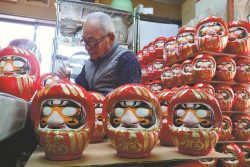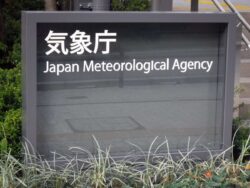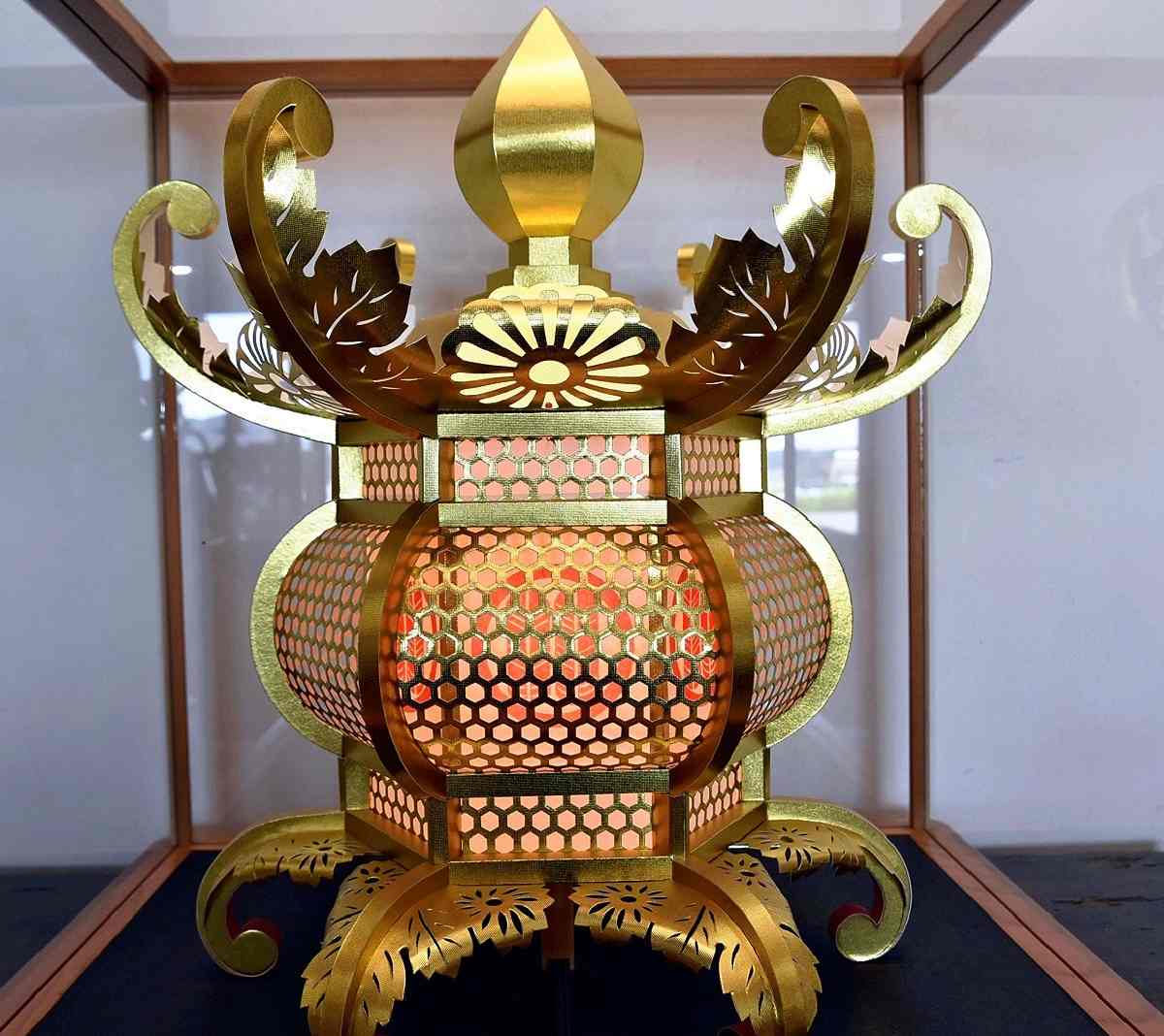
A golden lantern
15:30 JST, August 11, 2024
A thousand women wear golden lanterns on their head and dance in yukata summer kimono every August at the Yamaga Lantern Festival in Yamaga, Kumamoto Pref. Yamaga lanterns are made entirely with washi paper and glue without any wood or metal fittings.
There is an ornamental cap atop the lanterns called giboshi which is made of six sheets of washi glued together. The curved lines do not overlap and are glued only on the edges, which are only about 0.2 millimeters thick. This requires a high level of skill from the craftspeople.
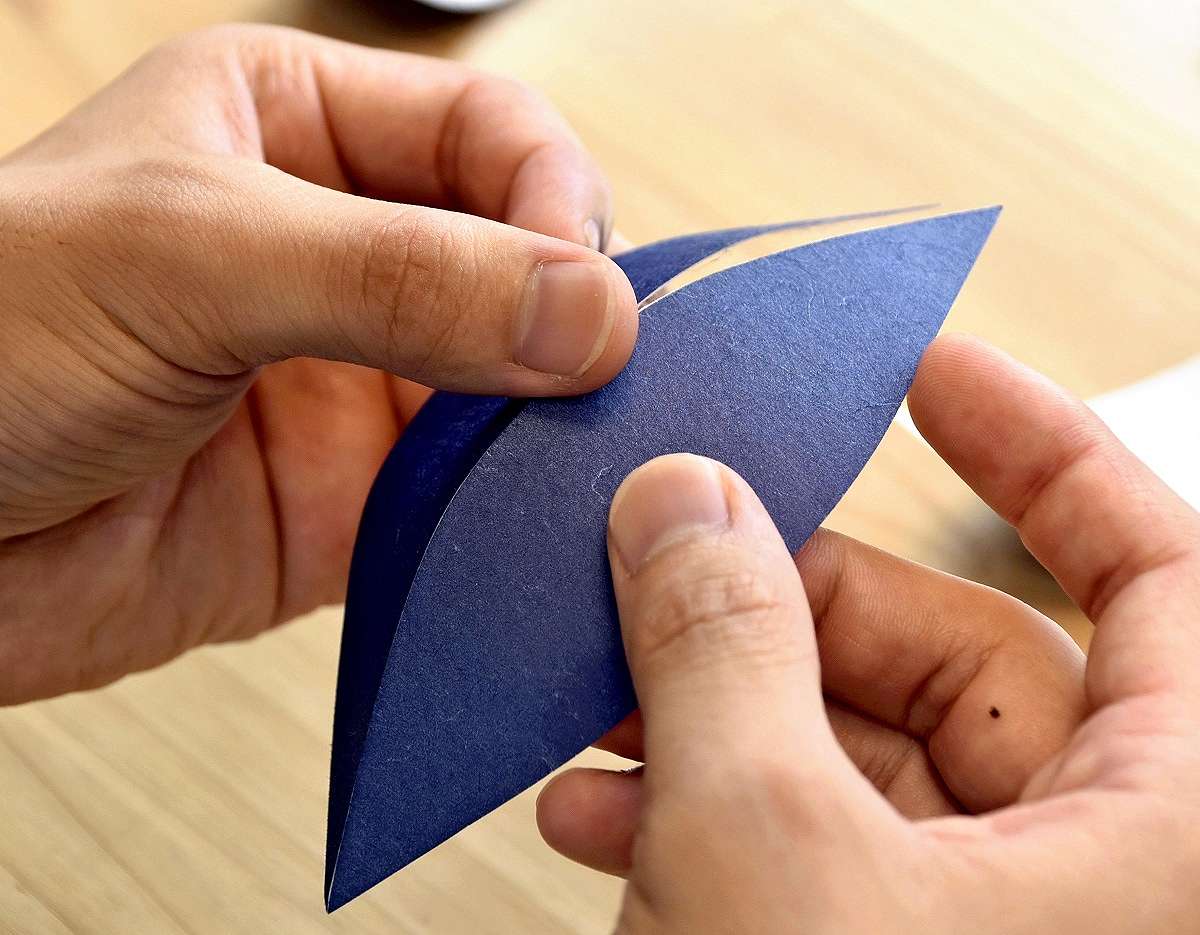
A giboshi part is made by gluing the edges of washi paper together.
During the festival, there are about 30 lanterns dedicated to the local Omiya Shrine commissioned by neighborhood communities and businesses.
There are lanterns of various shapes, such as Kumamoto Castle, Kinkakuji temple, an airplane and railroad cars. They look like normal miniatures at first glance but are not scaled down exactly from the real sizes. Instead, they are made with distinctive dimensions to highlight certain parts of the models.
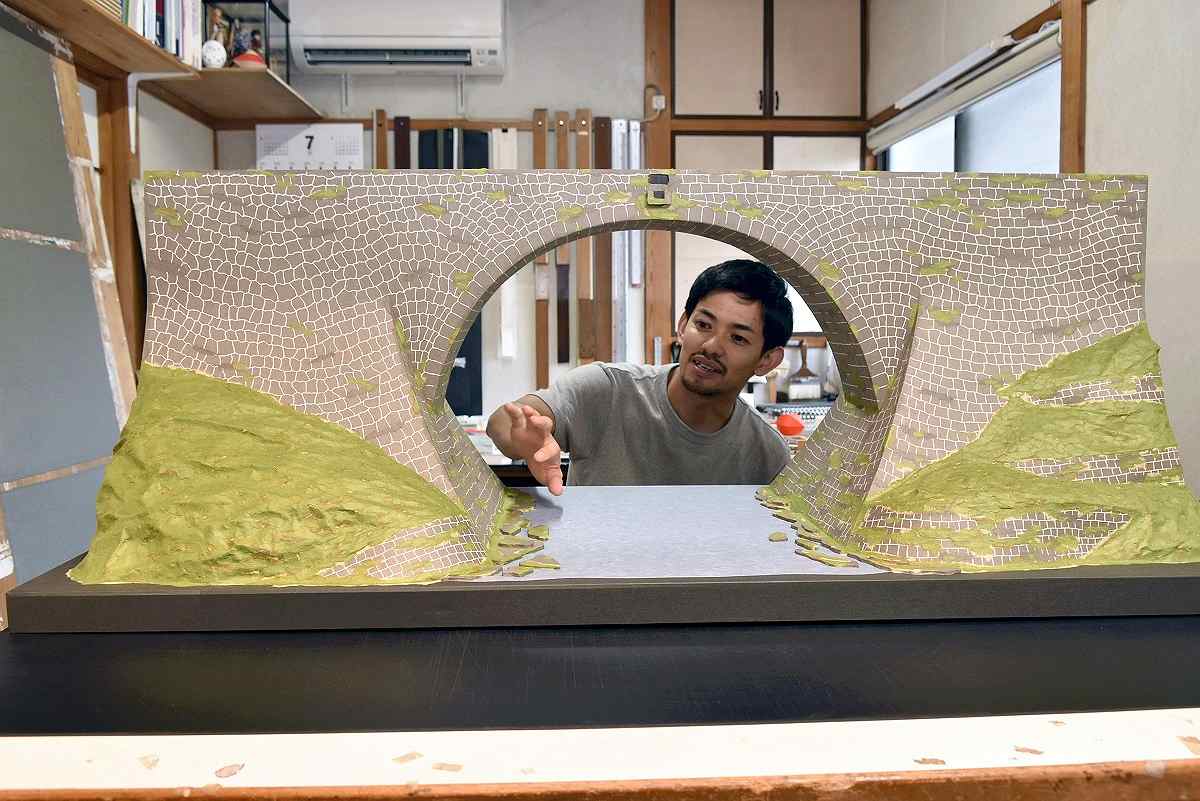
Junya Nakamura explains his work featuring the design of Tsujunkyo Bridge.
At the city’s Nakamura Seisakusho studio, craftsman Junya Nakamura was making a lantern modeled on Tsujunkyo Bridge, a stone arch bridge completed at the end of the Edo period (1603-1867). Last year, the bridge in the prefecture’s Yamato Town became the first civil engineering structure to be designated a national treasure. Nakamura’s lantern bridge is about 120 centimeters long and 40 centimeters in width and height, but weighs less than 1 kilogram.
Nakamura aspired to become a lantern craftsman after taking a workshop in junior high school. Then after eight years of training, he went independent in 2017, making lanterns to be dedicated to shrines as well as those with special themes, such as Studio Ghibli’s “Castle in the Sky” and a pirate ship from “One Piece.”
There are various theories about the origin of Yamaga lanterns, but they are said to have flourished during the Edo period when the area was a bustling Buzen Kaido road post town. Craftspeople, sponsored by wealthy Edo period businessmen, competed to show off their skills, and the craft flourished as a way to make offerings for Shinto rituals. Currently, there are seven lantern masters who carry on the craft.
Since 2015, the Yamaga Lantern Promotion Association has been developing new items suited to modern lifestyles. Aroma diffusers, in which the giboshi absorbs diffuser oil, are a popular item with more than 500 units sold each year. Do-it-yourself kits also sell well and are used in workshops at elementary schools and companies.
“I want to create items that excite me and the people who see them while preserving the tradition,” Nakamura said.
"Society" POPULAR ARTICLE
-

M4.9 Earthquake Hits Tokyo, Neighboring Prefectures
-

Israeli Tourists Refused Accommodation at Hotel in Japan’s Nagano Pref., Prompting Protest by Israeli Embassy and Probe by Prefecture
-

M7.5 Earthquake Hits Northern Japan; Tsunami Waves Observed in Hokkaido, Aomori and Iwate Prefectures
-

Tsukiji Market Urges Tourists to Avoid Visiting in Year-End
-

High School in Kyoto Says Students Shoplifted during Recent School Trip to Bali, Indonesia
JN ACCESS RANKING
-

Tokyo Economic Security Forum to Hold Inaugural Meeting Amid Tense Global Environment
-

Keidanren Chairman Yoshinobu Tsutsui Visits Kashiwazaki-Kariwa Nuclear Power Plant; Inspects New Emergency Safety System
-

Imports of Rare Earths from China Facing Delays, May Be Caused by Deterioration of Japan-China Relations
-

University of Tokyo Professor Discusses Japanese Economic Security in Interview Ahead of Forum
-

Japan Pulls out of Vietnam Nuclear Project, Complicating Hanoi’s Power Plans



